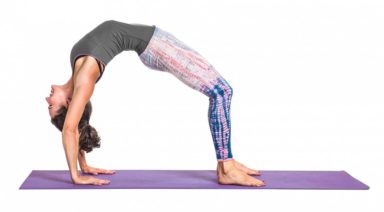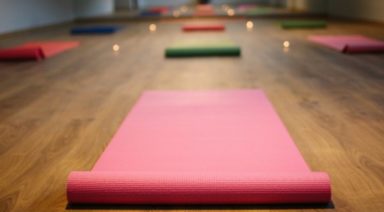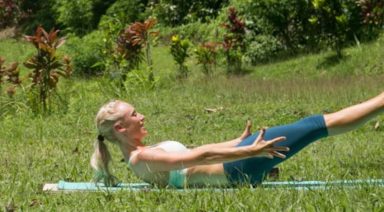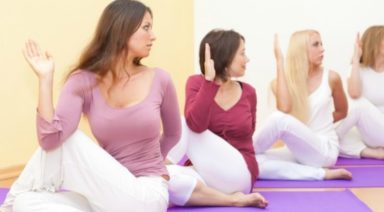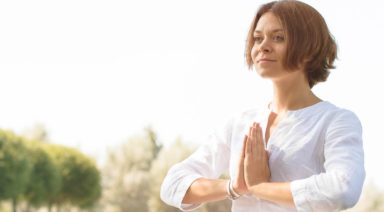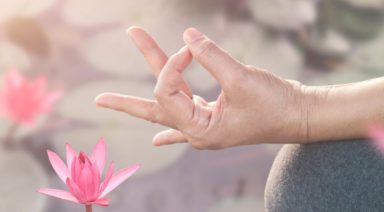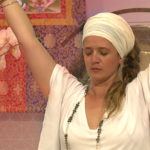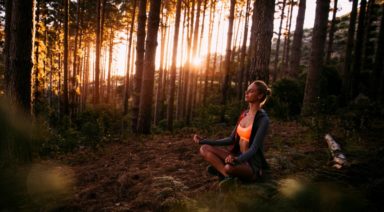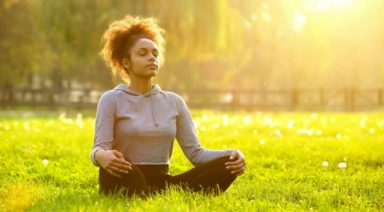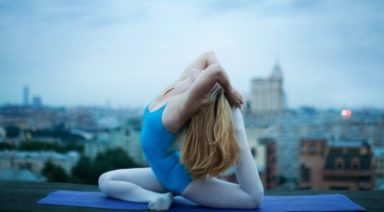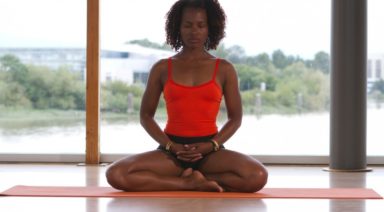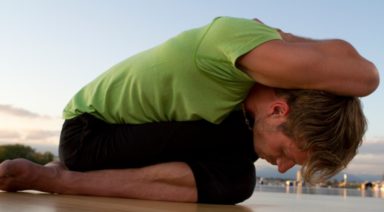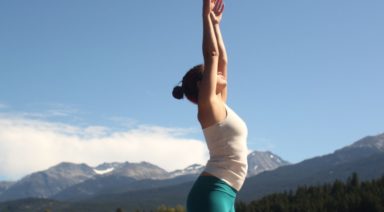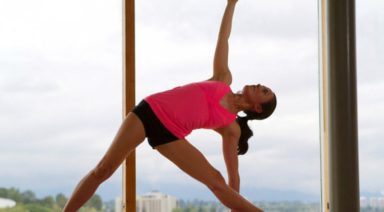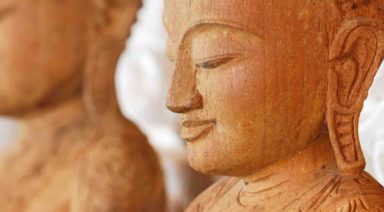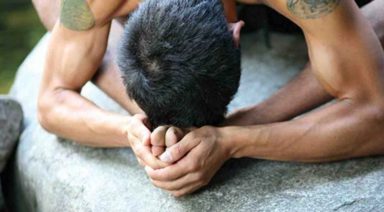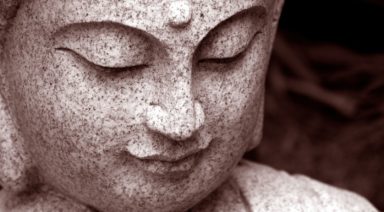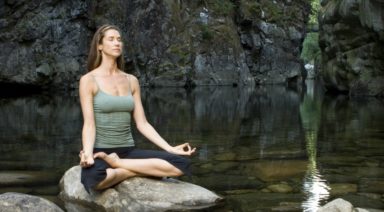Finding the Right Yoga Class for Right Now: A Guide to Feeling Good Today
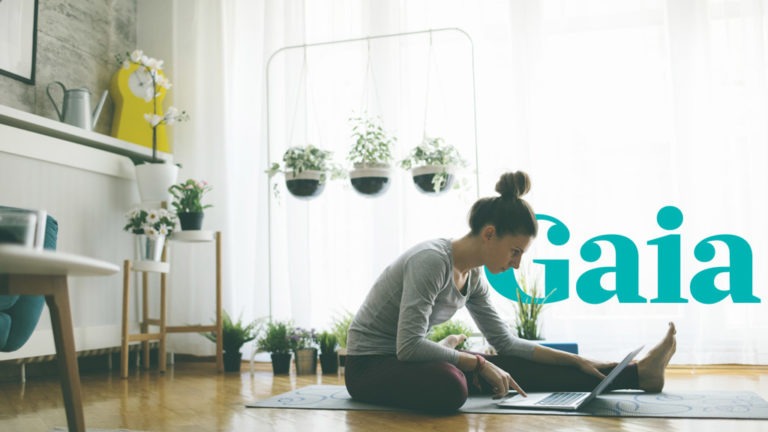
As a yoga teacher, student, and all around believer of the power of yoga, I’ve invited my fair share of people to classes over the years. Regardless if the class is at a studio, in my living room, or outside at the park with kids playing nearby, there’s one thing I’ve come to expect: excuses. For so many people, there’s always some sort of reason to not practice yoga – sometimes to not even try it.
While I understand that time is short and each day is different, I’ve also practiced yoga long enough to know that no matter how you’re feeling, or how much (or little) time you have, yoga will always – always – make you feel better.
There’s no one perfect type of yoga. There’s also no one perfect type of yoga student. With a practice that has been around for centuries, it has come across enough people to learn how to adapt. In fact, if there’s one thing that yoga is – it’s flexible. Thankfully, you don’t have to be…or at least not physically. The only requirement for enjoying a yoga class is having an open mind and a flexible way of thinking, especially if you’re trying something new.
And, of course, you need to know how to find the right class.
Questions to Consider
For all of the woes technology brings, one of its biggest boons is the fact that you have access to literally everything you need exactly when you need it – including a great yoga class.
Like anything in life, in order to get the results you want, you have to know what you want. When you start looking for the right yoga class online, you have to start with an understanding of where you are right now and where you want to end up. Being really honest with this is the best way to learn how to fall in love with yoga. As I begin searching for the class I want to practice, I’ll ask myself a few questions to check in with where I am and what I need:
- How much time do I have?
- How much time can I make?
- When is it the easiest to practice?
- When do I need to practice the most?
- How do I feel right now?
- How do I want to feel when I finish?
Thankfully, the best online yoga studios and libraries have recognized the benefit of finding just the right class, which is why they have a variety of filters and categories that you can select for your search. A lot of days, I use these filters almost as I would a deck of tarot cards: Take a moment to shuffle and tap and then see what shows up.
A few scrolls later, I’m on my mat, in my class, enjoying something that feels like it was made just for me. (Note: It’s wonderful.)
What Feels Right for You?
When I’m helping a friend or student get started with their online practice, I usually point them in the direction of a selection of my favorite categories and let them know what they can expect from them. In time, these categories become like your favorite studio – there when you need them and with those special teachers you love dearly.
Morning Yoga
There’s rarely a better time to practice than first thing in the morning. Not only is this where time seems to be the most flexible (it’s just a matter of getting in the habit of waking up and getting up), but traditionally there are a lot of energetic and spiritual benefits that come from practicing with the rising sun. Case in point: the known-by-almost-everyone sun salutation. Morning yoga classes will greet you sweetly and then wake your body up from head to toe. Knowing that you’re just getting out of bed, teachers create classes that are gentle with the body, giving you time to warm up before getting your body moving. The intentions set in morning yoga classes help you create a container for your day, giving you the sense of balance and steadiness you need to move forward gracefully, confidently, and purposefully.
Energy
Yoga for energy style classes are another great way to start your day, but they aren’t just geared for mornings. I find energy classes particularly helpful for when you hit that mid-day wall. While some of these classes are the “regular” studio class length (60 minutes), there are several energy options that will be shorter, making them a great go-to practice for lunch breaks and bridging that gap between one part of your day to the next (i.e. from work to home, from home to school, from having the house to yourself to welcoming home family, etc.) Basically, when you think you could use a cappuccino, try reaching for one of these yoga classes.
Stress Relief
Who couldn’t benefit from a stress relief yoga class? Just the simple act of participating in daily life is stressful, especially when you add the constant inundation of technology. Stress relief classes are a great choice before you go to bed or after you finish a day of work (that includes the work stay-at-home parents do, too!) I have a few short stress relief classes saved to my library so that I can easily get to them the moment I start to feel my breath shortening, my shoulders creeping up towards my ears, and that all-too-familiar clenching that happens in my jaw when I’m feeling irritated.
Flexibility
While trying to “achieve” flexibility is never the goal, improving your body’s physical flexibility can help keep you comfortable and healthy – for decades. Yoga classes designed for flexibility will meet you where you are and help you find ways to lengthen the muscles in your body. Choosing a class for flexibility is a lot like choosing food that’s healthy – you can’t go wrong. If you know specifically that there’s an area in your body that’s tight, search for a class that’s geared to address that particular muscle or area. You’ll be surprised how much better you feel – especially if you return to a few of your favorite practices again and again.
Back Discomfort
Like stress, there are few people who haven’t experienced back pain in their life. And, for many people, back pain isn’t just a one-time occurrence, it’s chronic and frustrating. While some back pain is caused by an actual singular event, the majority of back discomfort is caused by years of tight muscles, stress, and bad posture. Yoga classes for back health will help relieve the discomfort you’re experiencing while also strengthening the muscles in your body necessary to help prevent some of the discomforts with time.
Instead of thinking about the class you “should” practice, get in the habit of finding the class you really need. Once you learn this lesson, a whole new world of yoga opens up for you – and it’s awesome.
Urdhva Dhanurasana: Upward-Facing Bow

Urdhva dhanurasana (OORD-vah don-your-AHS-anna) is often mis-translated as full wheel pose (chakrasana). Upward facing bow pose is a deep backbend that can cultivate flexibility, strength, and patience. This posture is worth the effort with its long list of benefits, including an energy boost and thyroid and pituitary gland stimulation.
SANSKRIT:
- Urdhva: upward
- Dhanu: bow
- Asana: pose
PHYSICAL BENEFITS:
- Expands chest, lungs, shoulders.
- Stretches hip flexors, muscles of the abdomen, wrists.
- Strengthens glutes, hamstrings, lower back muscles.
ENERGETIC BENEFITS:
- Promotes courage and compassion.
- Enlivens the chakras.
- Increases energy.
PREPARATORY POSES:
- Bridge pose | Setu bandha sarvangasana
- Reclined hero pose | Supta virasana
- Upward facing dog | Urdhva mukha svanasana
SEQUENTIAL POSES:
- One-legged upward facing bow | Eka pada urdhva dhanurasana
- Wheel pose | Chakrasana
- King dancer pose | Natarajasana
COUNTER POSES:
- Half lord of the fishes pose | Ardha matsyendrasana
- Head to knee pose | Janu sirsasana
- Reclined hand to foot pose | Supta padangusthasana
ADJUSTMENTS/MODIFICATIONS:
- Blocks on the wall: Place two blocks on the floor against a wall, about shoulder distance apart. Place your hands on the blocks as you move into urdhva dhanurasana to help elevate your upper body and better engage your shoulder blades.
- Strap: Use a strap around your upper arms to prevent the elbows from splaying as you press upward.
- Block: Place a block between your thighs to keep your lower body engaged.
- One-legged: Try out eka pada urdhva dhanurasana by lifting up one leg at a time.
STEP-BY-STEP:
- Lie on your your back with your knees bent, feet on the floor, like you’re moving toward bridge pose.
- Place your palms on the ground beside your ears, fingertips facing your shoulders.
- Press into your feet, especially the big toe ball mound.
- Exhale to lift your tailbone and hips off the floor. Squeeze your thighs toward each other so your knees point straight ahead.
- Press into your hands to bring the crown of your head to the ground. Pause here for a breath.
- Draw your shoulder blades down your back while keeping elbows in line with shoulders. Press into your feet and hands equally.
- Exhale to straighten your arms and lift your head off the floor.
- Squeeze your inner thighs toward each other and down toward your mat (internal rotation). Lengthen your tailbone toward the back of your knees.
- Drop your head all the way back if comfortable.
- Hold the pose for up to a minute with a steady, long breath. Lower down and rest, option to repeat.
###Legal Disclaimer Before participating in any exercise program or using any fitness products or services that may be described and/or made accessible in or through the Gaia Website and/or the Services, you should consult with a physician or other healthcare provider. Read more about Gaia’s Terms Of Use.



